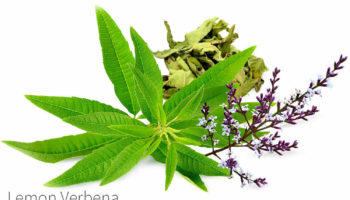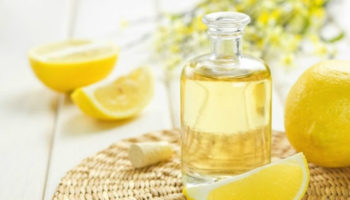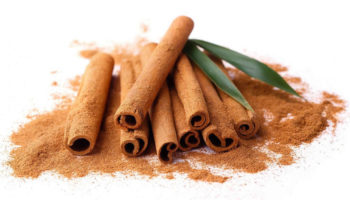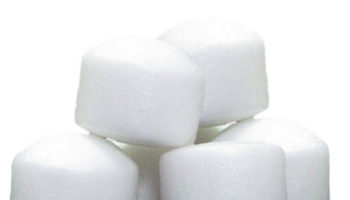Contents
What is peppermint oil good for
Peppermint is a hybrid mint, a cross between two types of mint water mint [Mentha aquatica] and spearmint [Mentha spicata L.] also known as Mentha piperita. Indigenous to Europe and the Middle East, the plant is now widespread in cultivation in many regions of the world 1. Peppermint has been used for health purposes for several thousand years. It is mentioned in records from ancient Greece, Rome, and Egypt. Both peppermint leaves and the essential oil from peppermint have been used for health purposes. However, peppermint was not recognized as a distinct kind of mint until the 1700s. Essential oils are very concentrated oils containing substances that give a plant its characteristic odor or flavor. Peppermint is a common flavoring agent in foods, and peppermint oil is used to create a pleasant fragrance in soaps and cosmetics.
Peppermint leaves are aromatic perennial herb cultivated in most part of the world and it is used as folk medicine and frequently used in herbal tea and for culinary purpose to add flavor and aroma 2. The peppermint essential oil is rich in menthol, l-menthone, pulegone, piperitone, menthol acetate, piperitenone menthone, carvone, menthofuran, isomenthone, menthyl acetate, isopulegol, menthol, 3-octanol, pulegone; hence, it also used as natural antioxidants 3, 4. Menthol activates cold-sensitive TRPM8 receptors in the skin and mucosal tissues, and is the primary source of the cooling sensation that follows the topical application of peppermint oil 5. In addition, δ-cadinene, copaene, eugenol, methyl pivalate, menthomenthene, thujopsene, caryophyllene oxide also some of the compound identified in peppermint essential oil and demonstrated antifungal activity and antibacterial activity 6, 7. Peppermint essential oil have shown potent inhibitory activity against several microorganisms such as Penicillium digitatum, Aspergillus flavus, Aspergillus niger, Candida albicans, Saccharomyces cerevisiae Mucor spp., and Fusarium oxysporum 8. Peppermint oil has been reported as antifungal agent for several mycotoxigenic speceies by Silva et al., 2012 9; Aspergillus flavus and Aspergillus parasiticus, Freire et al. 10, in 2012 reported against Aspergillus ochraceous, Colletotrichum gloeosporioides, Colletotrichum musae, F. oxysporum, Fusarium semitectum. Peppermint essential oil anti-inflammatory 11, antioxidant 12 and cytotoxic effects were reported by Sun et al. 2014 13. Currently, peppermint essential oil has been widely used in cosmetic, food and pharmaceutical industries.
Peppermint oil has a high concentration of natural pesticides, mainly pulegone and menthone 14. It is known to repel some pest insects, including mosquitos, and has uses in organic gardening 14.
Today, peppermint is used as a dietary supplement for irritable bowel syndrome (IBS), other digestive problems, the common cold, headaches, and other conditions. Peppermint oil is also used topically (applied to the skin) for headache, muscle aches, itching, and other problems. Peppermint leaf is available in teas, capsules, and as a liquid extract. Peppermint oil is available as liquid solutions and in capsules, including enteric-coated capsules.
Figure 1. Peppermint
Chemical Composition and Anti-Inflammatory, Cytotoxic and Antioxidant Activities of Peppermint Essential Oil from Leaves
51 volatile constituents in peppermint essential oil have been evaluated for their anti-inflammatory, cytotoxic and antioxidant activities 13. Test tube and animal studies showed that peppermint essential oil had a potent anti-inflammatory activity in the croton oil-induced mouse ear edema model, and the possible action mechanism might be attributed to its inhibitory effect on the production of nitric oxide (NO) and prostaglandin E2 (PGE2). Peppermint essential oil was also found to be active against SPC-A-1, K562 and SGC-7901 cancer cell lines. In addition, peppermint essential oil had a moderate antioxidant activity.
Peppermint antioxidant actions were previously suggested to be due to the presence of phenolic constituents in its leaves including rosmarinic acid and different flavonoids such as rutin, naringin, eriocitrin, luteolin, and hesperidin 15, 16. High-performance liquid chromatography (HPLC) analysis of the peppermint leaf hydroalcoholic extract detected some peaks that coeluted with pure ursolic acid, epicatechin, caffeic acid, rutin, quercetin, naringenin, and kaempferol. These compounds were previously shown to act as anti-inflammatory and/or antioxidants 17. In animal studies, it was clearly demonstrated in the Ames test that peppermint has antimutagenic effects once it significantly inhibited the shamma—a tobacco product—induced oral carcinogenesis in the hamster cheek pouch 18. These results may serve as valuable research references for clinical research of medicines for treatment of inflammation and cancer in the future.
Table 1. Chemical composition of peppermint essential oil
| No. | Molecular weight | Chemical constituents | (%) |
| 1 | 136 | α-Pinene | 0.2 |
| 2 | 136 | Sabinene | 0.2 |
| 3 | 136 | β-Pinene | 0.46 |
| 4 | 136 | β-Myrcene | 0.52 |
| 5 | 134 | Cymene | 0.22 |
| 6 | 136 | D-Limonene | 1.76 |
| 7 | 154 | Cineol | 2.91 |
| 8 | 136 | β-trans-Ocimene | 0.07 |
| 9 | 154 | Terpineol, cis-,β- | 0.71 |
| 10 | 154 | Linalool | 0.42 |
| 11 | 154 | 2-Cyclohexen-1-ol, 1-methyl-4-(1-methylethyl)-, trans- | 0.07 |
| 12 | 154 | Isopulegol | 0.15 |
| 13 | 154 | Menthone | 14.51 |
| 14 | 156 | Neomenthol | 9.26 |
| 15 | 156 | Menthol | 30.69 |
| 16 | 156 | Cyclohexanol, 5-methyl-2-(1-methylethyl)-, (1α, 2α, 5α)- | 0.45 |
| 17 | 154 | Terpilenol | 0.41 |
| 18 | 148 | Estragole | 0.3 |
| 19 | 138 | Carane | 0.07 |
| 20 | 152 | Pulegone | 4.36 |
| 21 | 152 | Pipertone | 2.31 |
| 22 | 198 | Menthy acetate | 12.86 |
| 23 | 198 | Levomenthol | 0.17 |
| 24 | 196 | Isopuegyl acetate | 0.08 |
| 25 | 204 | Bicyclogermacrnene | 0.06 |
| 26 | 164 | Eugenol | 0.11 |
| 27 | 204 | α-Bourbonene | 0.23 |
| 28 | 204 | β-Elemene | 0.29 |
| 29 | 164 | Jasmone | 0.09 |
| 30 | 204 | Caryophyllene | 2.52 |
| 31 | 204 | β-Farnesene | 0.54 |
| 32 | 204 | Naphthalene, 1,2,4a,5,6,8a-hexahydro-4,7-dimethyl-1-(1-methylethyl)- | 0.06 |
| 33 | 204 | Germacrene | 1.13 |
| 34 | 204 | 2(4H)-Benzofuranone, 5,6,7,7a-tetrahydro-3,6-dimethyl- | 1.69 |
| 35 | 204 | Cadinene | 0.18 |
| 36 | 154 | β-(3-Thienyl)acrylic acid | 2.09 |
| 37 | 220 | Spathalenol | 0.41 |
| 38 | 220 | Caryophyllene oxide | 1.37 |
| 39 | 222 | Ledol | 1.05 |
| 40 | 222 | 3-Hexadecyne | 0.11 |
| 41 | 222 | α-Cadinol | 0.16 |
| 42 | 220 | Aristolene epoxide | 0.1 |
| 43 | 222 | Eupiglobulol | 0.35 |
| 44 | 236 | Murolan-3,9(11)-diene-10-peroxy | 0.06 |
| 45 | 212 | Benzybenzoate | 0.09 |
| 46 | 220 | cis-Z-.α.-Bisabolene epoxide | 0.2 |
| 47 | 268 | Hexahydrofarnesgl acetone | 0.15 |
| 48 | 238 | Culmorin | 0.08 |
| 49 | 296 | Phytol | 0.14 |
| 50 | 290 | Grindelene | 0.06 |
| 51 | 282 | Eicosanel | 0.06 |
Note:
Peppermint essential oil benefits
In Eastern and Western traditional medicines, peppermint and its oil have been used in antispasmodics, aromatics, antiseptics or even medications for the treatment of colds, cramps, indigestions, nausea, sore throat, toothache or even cancer 19. Modern pharmacology research has demonstrated that peppermint possesses antioxidant, antitumor, antiallergenic, antiviral and antibacterial activities 20, 21, 22, 23.
Peppermint oil for IBS (Irritable Bowel Syndrome)
Irritable bowel syndrome (IBS) is a common condition with a community prevalence of 10-15% of the general population 24. The annual incidence in primary care is around 0.8%, and the prevalence of patients diagnosed in primary care is about 3-4% 25. The disorder is difficult to treat, hence the wide range of treatments used—dietary exclusion, fiber supplements, and probiotics; antispasmodic drugs, antidiarrhoeal agents, and laxatives; antidepressants, hypnotherapy, and cognitive behavioral therapy.
In this systematic review and meta-analysis 26, the researchers investigated the effectiveness of antispasmodics, fiber and peppermint oil in the treatment of IBS (irritable bowel syndrome). Individual trials on these treatments have been of variable quality with conflicting results, and previous systematic reviews have also resulted in different conclusions. This is a high quality systematic review that looked into all published research of peppermint oil, muscle relaxants (or antispasmodics) and fiber used in the treatment of IBS (irritable bowel syndrome). The three treatments were all found to reduce the risk of having persistent symptoms (such as abdominal pain and bloating) compared to placebo.
The researchers searched medical research databases to identify all randomized controlled trials (including foreign language studies) involving adults who met diagnostic criteria for IBS and who had received investigations, if necessary, to exclude an underlying cause. Studies had to compare antispasmodics, fibre or peppermint oil with an inactive placebo drug. They also had to include a follow-up of at least one week with an assessment of cure or improvement of symptoms. The researchers also hand-searched abstracts of conference proceedings for potential studies and looked at reference lists of all selected studies.
The main outcome that the researchers looked for was the efficacy of any of the three treatments compared to placebo on all IBS symptoms or just abdominal pain. The researchers assessed the quality of the trials and results were pooled to give the relative risk of symptoms persisting after treatment.
The search found 35 eligible studies for inclusion: 19 involving antispasmodics, nine of fibre, four of peppermint oil, and three involving antispasmodics or fibre.
The 12 trials of fiber had a total of 591 people with IBS. Treatments included bran (five studies), ispaghula husk (six studies) and, in one study, concentrated fiber. Overall, any fiber treatment reduced the risk of persistent symptoms by 13%, but this result was only of borderline significance. The only individual treatment that gave a significant reduction in symptoms was ispaghula.
The 22 trials of antispasmodics included 1,778 people with IBS and used a variety of drugs (12 in total) at different doses. Overall, antispasmodics significantly reduced the risk of persistent symptoms by 32% 26. Of the individual drugs, only hyoscine, cimetropium, pinaverium and otilonium gave consistent significant evidence of benefit.
The four trials of peppermint oil, at different doses, included 392 people with IBS. Across these studies, 26% of those randomized to peppermint oil experienced persistent symptoms compared to 65% of those assigned to placebo. This gave an overall 57% reduction in risk of persistent symptoms when taking peppermint oil 26.
The number of people that would need to be treated to prevent one person from having persistent abdominal symptoms was 2.5 for peppermint, five for antispasmodics and 11 for fiber 26.
However, there are several points to bear in mind:
- The trials included in the review were of variable size, included slightly different patient groups, fulfilling different diagnostic criteria for IBS, different doses and treatment durations, were carried out in different settings (e.g. primary or secondary care), and used different criteria for symptom improvement. In the antispasmodic and peppermint oil trials, heterogeneity (diversity) was demonstrated to be statistically significant, i.e. different methods and results were obtained between trials, which may call into question the validity of combining results of the studies in this way.
- Although peppermint oil was highlighted in the review, as it demonstrated the greatest reduction in risk, it only included four trials with 392 people. This limits the strength of the conclusions that can be drawn from the combination of these studies. However, this is partly countered by the fact that three of the studies were of high quality and there was no statistical heterogeneity when they were combined. This increases the confidence in the finding.
- The authors report that none of the trials state whether the allocation of the treatments was concealed. This means that practitioners may have been aware of whether the active treatment or placebo was being given to participants. It has been found that this type of bias may give an overestimation of treatment effect.
- Adverse effects were not consistently reported across studies, so no firm conclusions can be made about the safety of any of the three treatments.
- The trials have only compared each treatment to inactive placebo, so it cannot be assumed that any one treatment is more effective than the others.
IBS has no single identified cause. It is not a pathological condition, i.e. there is no underlying disease process, but the bowel does not function properly, causing discomfort and inconvenience for sufferers. This review provides evidence to support the use of symptomatic treatments such as peppermint oil 26.
What have we learned ?
- Peppermint oil has been studied most extensively for IBS. Results from several studies indicate that peppermint oil in enteric-coated capsules may improve IBS symptoms.
- A few studies have indicated that peppermint oil, in combination with caraway oil, may help relieve indigestion, but this evidence is preliminary and the product that was tested is not available in the United States.
- Peppermint oil has been used topically for tension headaches and a limited amount of evidence suggests that it might be helpful for this purpose.
- There’s not enough evidence to allow any conclusions to be reached about whether peppermint oil is helpful for nausea, the common cold, or other conditions.
- There’s not enough evidence to show whether peppermint leaf is helpful for any condition.
Peppermint oil toxicity and safety
Toxicology studies of peppermint oil and its components have been performed in animals. Histopathological changes in the white matter of the cerebellum were seen in rats (n = 20) given peppermint oil at doses of 40 and 100 mg/kg orally for 28 days, but no adverse effects were observed at 10 mg/kg 27. No adverse effects were observed at 10 mg/kg. In a comparable 90 day rat study (n = 28), cyst-like spaces in the white matter of the cerebellum and hyaline droplets in the proximal tubules of the kidneys were observed in the highest dose group only 28. Interestingly, the extension of the cyst-like spaces was not aggravated with prolonged dosing in this study. Menthol administered to rats by gavage at 200, 400 and 800 mg/kg for 28 days significantly increased absolute and relative liver weights and the vacuolization of hepatocytes at all doses, although no sign of encephalopathy was observed 29. At 80 and 160 mg/kg, pulegone administered for 28 days induced atonia, decreased blood creatinine levels, lowered body weight and caused histopathological changes in the liver and white matter of the cerebellum 29. No adverse effects were observed with 20 mg/kg pulegone. Menthone given orally to rats (n = 20) at 200, 400 and 800 mg/kg for 28 days decreased creatinine and increased alkaline phosphatase in a dose-dependent manner, increased bilirubin and liver and spleen weights, and also caused histopathological changes in the white matter of the cerebellum in the two highest dose groups 30. The accumulation of protein droplets containing α2μ-globulin in proximal tubular epithelial cells of rats (n = 10/group) was observed after the administration of either 500–1000 mg/kg 1,8-cineole or 800–1600 mg/kg limonene for 28 days, however, no histopathological changes were observed in the brain 31.
- Although peppermint is commonly available as an herbal supplement, there are no established, consistent manufacturing standards for it, and some peppermint products may be contaminated with toxic metals or other substituted compounds.
- Peppermint oil appears to be safe when taken orally (by mouth) in the doses commonly used. Excessive doses of peppermint oil can be toxic.
- Short-term and sub-chronic peppermint oil oral studies reported cystlike lesions in the cerebellum in rats that were given doses of Peppermint Oil containing pulegone, pulegone alone, or large amounts (>200 mg/kg/day) of menthone. Pulegone is also a recognized hepatotoxin 32.
- Possible side effects of peppermint oil include allergic reactions and heartburn. Capsules containing peppermint oil are often enteric-coated to reduce the likelihood of heartburn. If enteric-coated peppermint oil capsules are taken at the same time as antacids, the coating can break down too quickly.
- Like other essential oils, peppermint oil is highly concentrated. When the undiluted essential oil is used for health purposes, only a few drops are used.
- Side effects of applying peppermint oil to the skin can include skin rashes and irritation. Repeated intradermal dosing with Peppermint Oil produced moderate and severe reactions in rabbits, although Peppermint Oil did not appear to be phototoxic. Peppermint oil should not be applied to the face or chest of infants or young children because serious side effects may occur if they inhale the menthol in the oil.
- A study on diet and the development of gastroesophageal reflux disease (GERD) 33 found that frequent consumption of peppermint tea was a risk factor for the development of gastroesophageal reflux disease (GERD). Gastroesophageal reflux disease (GERD) is a chronic gastrointestinal disease that significantly reduces quality of life and, in some patients, leads to serious complications, such as oesophageal stricture, gastrointestinal bleeding, or Barrett’s oesophagus. According to various sources, the typical symptoms of this disease (heartburn, discomfort in the upper abdomen, acid eructation) are experienced daily by 4–10%, and weekly by 10–30% of the adult population in Western countries 34. Literature sources suggest that peppermint decreases lower esophageal sphincter (LES) tension; moreover, peppermint oil (studied in animal models) relaxes the smooth muscles of the alimentary tract 35. Oliveria et al. 36 found that 8% of heartburn patients reported complaints after consuming peppermint. In contrast, Terry et al. 37 and Bulat et al. 38 did not observe any effect of consuming products and beverages with peppermint on reflux episodes. This issue requires further research.
- The long-term safety of consuming large amounts of peppermint leaf is currently unknown.
A review on the use of peppermint oil, leaf extract, leaf and leaf water in cosmetic formulations by Nair 39 concluded that each are considered safe, although the concentration of pulegone in products containing these ingredients should be limited to 1%. Although the toxicity of menthol is considered to be low, it has the ability to enhance the penetration and absorption of other agents contained in some formulations, thereby increasing the effective dose of these agents at the indicated intake. A few case study reports have described contact sensitivities to peppermint oil and its components in topical and oral preparations 40, 41, but a patch test study of 4000 patients by Kanerva et al. 42 found that menthol and peppermint oil provoked neither allergic nor irritant reactions.
Akdogan et al. 43 reported increased follicle stimulating hormone (FSH) and luteinizing hormone (LH) levels and decreased testosterone levels in rats given 20 g/L peppermint tea in place of their drinking water. As opposed to spearmint tea, the only effect of peppermint on testicular tissue was segmental maturation arrest in the semniferous tubules. There are no chronic toxicity studies of peppermint in humans, although the German Commission E 44 reports that the use of peppermint oil is contraindicated in patients with bile duct, gallbladder and liver disorders. Caution is also recommended for the use of peppermint oil capsules in patients with GI reflux, hiatal hernia or kidney stones.
- Sun Z, Wang H, Wang J, Zhou L, Yang P. Chemical Composition and Anti-Inflammatory, Cytotoxic and Antioxidant Activities of Essential Oil from Leaves of Mentha piperita Grown in China. Pizzo SV, ed. PLoS ONE. 2014;9(12):e114767. doi:10.1371/journal.pone.0114767. https://www.ncbi.nlm.nih.gov/pmc/articles/PMC4262447/[↩]
- Antimicrobial screening of Mentha piperita essential oils. Işcan G, Kirimer N, Kürkcüoğlu M, Başer KH, Demirci F. J Agric Food Chem. 2002 Jul 3; 50(14):3943-6. https://www.ncbi.nlm.nih.gov/pubmed/12083863/[↩]
- Mohaddese M, Kazempour N. Chemical composition and antimicrobial activity of peppermint (Mentha piperita L.) Essential oil. Songklanakarin J Sci Technol. 2014;36:1.[↩]
- Skalicka-Woz´niak K, Walasek M. Preparative separation of menthol and pulegone from peppermint oil (Mentha piperita L.) by high performance counter current chromatography. Phytochem Lett. 2014;10:xciv–viii.[↩]
- Menthol and related cooling compounds. J Pharm Pharmacol. 1994 Aug;46(8):618-30. https://www.ncbi.nlm.nih.gov/pubmed/7529306[↩]
- Samber N, Varma AL, Manzoor N. Evaluation of Mentha piperita essential oil and its major constituents for antifungal activity in Candida spp. Int J Innov Technol Exploring Eng. 2014;3:9404–11.[↩]
- Derwich EL, Benziane ZI, Chabir RA, Taouil RA. In vitro antioxidant activity and GC/MS studies on the leaves of Mentha piperita (Lamiaceae) from Morocco. Int J Pharm Sci Drug Res. 2011;3:130–6.[↩]
- Tyagi AK, Malik A. Antimicrobial potential and chemical composition of Mentha piperita oil in liquid and vapour phase against food spoiling microorganisms. Food Control. 2011;22:1707–14.[↩]
- Silva FC, Chalfoun SM, Siqueira VM, Botelho DM, Lima N, Batista LR. Evaluation of antifungal activity of essential oils against potentially mycotoxigenic Aspergillus flavus and Aspergillus parasiticus. Rev Bras Farmacognosia. 2012;22:1002–10.[↩]
- Freire MM, Jham GN, Dhingra OD, JARDIM C, Barcelos RC, VALENTE V, MOREIRA M. Composition, antifungal activity and main fungitoxic components of the essential oil of Mentha piperita L. J Food Saf. 2012;32:29–36.[↩]
- Biochemical activities of Iranian Mentha piperita L. and Myrtus communis L. essential oils. Yadegarinia D, Gachkar L, Rezaei MB, Taghizadeh M, Astaneh SA, Rasooli I. Phytochemistry. 2006 Jun; 67(12):1249-55. https://www.ncbi.nlm.nih.gov/pubmed/16777154/[↩]
- Antimicrobial and antioxidant activities of three Mentha species essential oils. Mimica-Dukić N, Bozin B, Soković M, Mihajlović B, Matavulj M. Planta Med. 2003 May; 69(5):413-9. https://www.ncbi.nlm.nih.gov/pubmed/12802721/[↩]
- Chemical Composition and Anti-Inflammatory, Cytotoxic and Antioxidant Activities of Essential Oil from Leaves of Mentha piperita Grown in China. Sun Z, Wang H, Wang J, Zhou L, Yang P. PLoS One. 2014; 9(12):e114767. https://www.ncbi.nlm.nih.gov/pmc/articles/PMC4262447/[↩][↩][↩]
- Kumar S, Wahab N, Warikoo R. Bioefficacy of Mentha piperita essential oil against dengue fever mosquito Aedes aegypti L. Asian Pacific Journal of Tropical Biomedicine. 2011;1(2):85-88. doi:10.1016/S2221-1691(11)60001-4. https://www.ncbi.nlm.nih.gov/pmc/articles/PMC3609176/[↩][↩]
- Phenolic profile and antioxidant evaluation of Mentha x piperita L. (peppermint) extracts. Dorman HJ, Koşar M, Başer KH, Hiltunen R. Nat Prod Commun. 2009 Apr; 4(4):535-42. https://www.ncbi.nlm.nih.gov/pubmed/19476001/[↩]
- Antiradical and anti-H2O2 properties of polyphenolic compounds from an aqueous peppermint extract. Sroka Z, Fecka I, Cisowski W. Z Naturforsch C. 2005 Nov-Dec; 60(11-12):826-32. https://www.ncbi.nlm.nih.gov/pubmed/16402541/[↩]
- Guruvayoorappan C., Kuttan G. Rutin inhibits nitric oxide and tumor necrosis factor-alpha production in lipopolysaccharide and concanavalin-a stimulated macrophages. Drug Metabolism and Drug Interactions. 2007;22(4):263–278. https://www.ncbi.nlm.nih.gov/pubmed/18447002[↩]
- Mint prevents shamma-induced carcinogenesis in hamster cheek pouch. Samman MA, Bowen ID, Taiba K, Antonius J, Hannan MA. Carcinogenesis. 1998 Oct; 19(10):1795-801. https://www.ncbi.nlm.nih.gov/pubmed/9806161/[↩]
- A review of the bioactivity and potential health benefits of peppermint tea (Mentha piperita L.). McKay DL, Blumberg JB. Phytother Res. 2006 Aug; 20(8):619-33. https://www.ncbi.nlm.nih.gov/pubmed/16767798/[↩]
- Zheng W., Wang S.Y. Antioxidant activity and phenolic compounds in selected herbs. J. Agric. Food Chem. 2001;49:5165–5170. doi: 10.1021/jf010697n.[↩]
- Kim S., Cho Y., Park S. Cytotoxicity of methanol extracts of edible herbs against L1210 cells with the changes of antioxidant enzymes activities. Korean J. Pharm. 2002;33:376–383. [in Korean][↩]
- Inoue T., Sugimoto Y., Masuda H., Kamei C. Antiallergic effect of flavonoid glycosides obtained from Mentha piperita L. Biol. Pharm. Bull. 2002;25:256–259. doi: 10.1248/bpb.25.256.[↩]
- Herrmann E.C., Kucera L.S. Antiviral substances in plants of the mint family (Labiatae). III. Peppermint (Mentha piperita) and other mint plants. Proc. Soc. Exp. Biol. Med. 1967;124:874–878.[↩]
- Tally NG, O. keele E.A, Zinsmeister A.R, Meton LV “ Prevalence of G .I symptoms in elderly- a population based study” Gastroenterology 102;895;1992[↩]
- Emeran .A. Mayer” irritable bowel syndrome” N eng. J. Med 358:16; April 17;1692-99;2008.[↩]
- Ford AC, Talley NJ, Spiegel BMR, et al. Effect of fibre, antispasmodics, and peppermint oil in the treatment of irritable bowel syndrome: systematic review and meta-analysis. BMJ 2008;337:a2313 https://doi.org/10.1136/bmj.a2313 (Published 14 November 2008) http://www.bmj.com/content/337/bmj.a2313.full[↩][↩][↩][↩][↩]
- Thorup I, Wurtzen G, Carstensen J, Olsen P. 1983a. Short term toxicity study in rats dosed with peppermint oil. Toxicol Lett 19: 211–215.[↩]
- Spindler P, Madsen C. 1992. Subchronic toxicity study of peppermint [Mentha piperita and Mentha arvensis] oil in rats. Toxicol Lett 62: 215–220.[↩]
- Thorup I, Wurtzen G, Carstensen J, Olsen P. 1983b. Short term toxicity study in rats dosed with pulegone and menthol. Toxicol Lett 19: 207–210.[↩][↩]
- Madsen C, Wurtzen G, Carstensen J. 1986. Short-term toxicity study in rats dosed with menthone. Toxicol Lett 32: 147–152.[↩]
- Kristiansen E, Madsen C. 1995. Induction of protein droplet (alpha 2 mu-globulin) nephropathy in male rats after short-term dosage with 1,8-cineole and l-limonene. Toxicol Lett 80: 147–152.[↩]
- Final report on the safety assessment of Mentha Piperita (Peppermint) Oil, Mentha Piperita (Peppermint) Leaf Extract, Mentha Piperita (Peppermint) Leaf, and Mentha Piperita (Peppermint) Leaf Water. Int J Toxicol. 2001;20 Suppl 3:61-73. https://www.ncbi.nlm.nih.gov/pubmed/11766133[↩]
- Jarosz M, Taraszewska A. Risk factors for gastroesophageal reflux disease: the role of diet. Przegla̜d Gastroenterologiczny. 2014;9(5):297-301. doi:10.5114/pg.2014.46166. https://www.ncbi.nlm.nih.gov/pmc/articles/PMC4223119/[↩]
- Gastroesophageal reflux among different racial groups in the United States. El-Serag HB, Petersen NJ, Carter J, Graham DY, Richardson P, Genta RM, Rabeneck L. Gastroenterology. 2004 Jun; 126(7):1692-9. https://www.ncbi.nlm.nih.gov/pubmed/15188164/[↩]
- GERD pathogenesis, pathophysiology, and clinical manifestations. Kahrilas PJ. Cleve Clin J Med. 2003 Nov; 70 Suppl 5():S4-19. https://www.ncbi.nlm.nih.gov/pubmed/14705378/[↩]
- Heartburn risk factors, knowledge, and prevention strategies: a population-based survey of individuals with heartburn. Oliveria SA, Christos PJ, Talley NJ, Dannenberg AJ. Arch Intern Med. 1999 Jul 26; 159(14):1592-8. https://www.ncbi.nlm.nih.gov/pubmed/10421282/[↩]
- Reflux-inducing dietary factors and risk of adenocarcinoma of the esophagus and gastric cardia. Terry P, Lagergren J, Wolk A, Nyrén O. Nutr Cancer. 2000; 38(2):186-91. https://www.ncbi.nlm.nih.gov/pubmed/11525596/[↩]
- Lack of effect of spearmint on lower oesophageal sphincter function and acid reflux in healthy volunteers. Bulat R, Fachnie E, Chauhan U, Chen Y, Tougas G. Aliment Pharmacol Ther. 1999 Jun; 13(6):805-12. https://www.ncbi.nlm.nih.gov/pubmed/10383511/[↩]
- Nair B. 2001. Final report on the safety assessment of Mentha piperita (peppermint) oil, Mentha piperita (peppermint) leaf extract, Mentha piperita (peppermint) leaf, and Mentha piperita (peppermint) leaf water. Int J Toxicol 20: 61–73[↩]
- Morton CA, Garioch J, Todd P, Lamey PJ, Forsyth A. 1995. Contact sensitivity to menthol and peppermint in patients with intra-oral symptoms. Contact Dermatitis 32: 281–284.[↩]
- Bonamonte D, Mundo L, Daddabbo M, Foti C. 2001. Allergic contact dermatitis from Mentha spicata (spearmint). Contact Dermatitis 45: 298.[↩]
- Kanerva L, Rantanen T, Aalto-Korte K et al. 2001. A multicenter study of patch test reactions with dental screening series. Am J Contact Dermat 12: 83– 87.[↩]
- Akdogan M, Ozguner M, Kocak A, Oncu M, Cicek E. 2004c. Effects of peppermint teas on plasma testosterone, follicle-stimulating hormone, and luteinizing hormone levels and testicular tissue in rats. Urology 64: 394–398.[↩]
- Blumenthal M, Busse WR, Goldberg A et al. (eds). 1998. The Complete German Commission E Monographs – Therapeutic Guide to Herbal Medicines. American Botanical Council: Austin.[↩]





